Fighting vehicles based on BDM-3 (part of 3) "Shell", etc.
Speed "Shell"
The BTR-MD armored personnel carrier (the “955 Object”) was developed at VgTZ within the framework of the OCR “Shell”. It is a multipurpose high-speed armored amphibious airborne and airborne tracked vehicle for solving transport problems of units and parts of the airborne troops and the amphibious assault. By analogy with the BMD-BTR-D family, the airborne BTR-MD armored personnel carrier differs from the base BMD-3 by the absence of a turret and increased hull dimensions. On this similarity with the previous family, in general, and ends. In this case, it was not necessary to increase the length of the chassis, and the BTR-MD was made on the same five-roll (five-support) base as the BMD-3.
The armored personnel carrier is arranged according to the scheme with the rear location of the MTO and the front - the control compartment. The middle compartment of the hull can be used to place troops, wounded on a stretcher, or supplies. The control compartment and the middle compartment are located inside the tall cutting-type building, occupying about 2/3 of the total length of the machine. Welded sealed armored housing made of aluminum armor alloy; the broadening of the hull in the upper part forms large fenestrated niches with vertical sides. The frontal sheets of the body are inclined to the vertical and form a convex broken line in a vertical longitudinal section. The inclination of the frontal sheets and the characteristic “cheekbones” of the body slightly increase the security of the frontal projection. At the same time, the size and shape of the hull are designed to provide the maximum possible machine capacity under severe restrictions on weight and permissible height, determined by the requirements of parachute landing from military transport aircraft aviation, in the lower part of the hull reinforced bevels are made - redans.
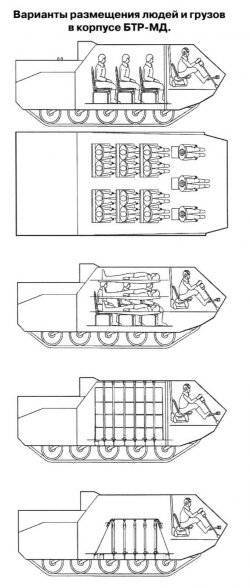 Mechanic-driver, as in the BMD-3, is located in the department of management along the axis of the machine. At his workplace mounted controls, including an adjustable steering column. To the right and left of the driver's seat there are two universal seats each on an elevated polik. Above the seats of the driver and the paratrooper to his right in the roof there are hatches with hinged covers. The workplace of the driver is equipped with three periscopic surveillance devices TNPO-170А; the average device can be replaced by a night observation device.
Mechanic-driver, as in the BMD-3, is located in the department of management along the axis of the machine. At his workplace mounted controls, including an adjustable steering column. To the right and left of the driver's seat there are two universal seats each on an elevated polik. Above the seats of the driver and the paratrooper to his right in the roof there are hatches with hinged covers. The workplace of the driver is equipped with three periscopic surveillance devices TNPO-170А; the average device can be replaced by a night observation device.On the left side in the front of the hull on the roof is mounted a rotary commander's turret with an autonomous closed machine-gun installation of a 7,62-mm PKT machine gun (PKTM) with an external power supply system and an 1P67M sight. The turret is equipped with a TKN-ZMB observation device with an OU-ZGA illuminator, periscope observation devices TNPT-1 and TNPO-170А, a lifting mechanism and an upper hatch. The universal seat of the commander-operator is connected with the upper shoulder strap of the turret and rotates with it (a rotary turret with a remote-controlled 7,62-mm machine gun was placed on the experimental version of the BTR-D, but then it was abandoned). On the right side of the control compartment there is a course set designed to accommodate an 5,45-mm RPK74 light machine gun or AX74 assault rifle (AK74M), above it is a periscope sight-monitoring device TNPP-220А. In the sides of the middle part and in the cover of the aft hatch, three ball mounts with dampers are mounted, intended for firing from an individual weapons landing. Two blocks of smoke grenade launchers of the “Tucha” system are mounted on the upper front hull plate. In the middle part of the hull, there are installed double seats with folding backs that are folded back to the side - three on board. Paratroopers are placed on the seats face down the car; the seats are equipped with a set of seat belts. For landing and landing troops serve as a large stern hatch and two rectangular hatch in the roof of the hull.
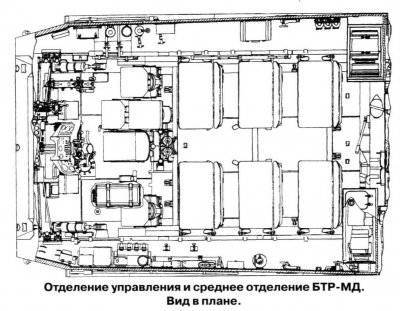 Behind the paratroopers' places on the left side in the middle part of the hull is a compartment with an autonomous power unit, on the right side there is an air duct with a retractable air intake pipe and an outdoor air cleaning system with a PSF including a supercharger, a fine filter, a filter absorber and air ducts. Air ducts enable directional regulated supply of purified air to the workplace zone. Individual respiratory protection equipment, such as a half mask, can be connected to air ducts. Each universal crew seat in the ground position ("sitting") is attached to the bracket with a bar from the inside of the hull roof. In the position for the landing it is detached from the bracket, lowered to the support associated with the sublime polycom, and leans back. When landing a paratrooper inside the car, sitting on the seat, tightens the harness of the harness system, his head rests on the headrest of the seat, and his feet - on the footboard on the polik. As in the base car, mounting universal seats to the roof in the ground position increases the security of paratroopers when undermining a mine or a land mine.
Behind the paratroopers' places on the left side in the middle part of the hull is a compartment with an autonomous power unit, on the right side there is an air duct with a retractable air intake pipe and an outdoor air cleaning system with a PSF including a supercharger, a fine filter, a filter absorber and air ducts. Air ducts enable directional regulated supply of purified air to the workplace zone. Individual respiratory protection equipment, such as a half mask, can be connected to air ducts. Each universal crew seat in the ground position ("sitting") is attached to the bracket with a bar from the inside of the hull roof. In the position for the landing it is detached from the bracket, lowered to the support associated with the sublime polycom, and leans back. When landing a paratrooper inside the car, sitting on the seat, tightens the harness of the harness system, his head rests on the headrest of the seat, and his feet - on the footboard on the polik. As in the base car, mounting universal seats to the roof in the ground position increases the security of paratroopers when undermining a mine or a land mine. An important innovation in the BTR-MD was the installation on the bottom of the control compartment and the middle compartment of electric heating devices that work in conjunction with an electric fan and provide heating for the habitable volume of an armored personnel carrier in recirculation mode. The air is taken directly from the habitable volume and after heating is supplied from under the elevated polik (such systems were not used on the BMD-3 and BMD-4). The power unit, transmission, chassis and controls of the BTR-MD are generally similar to BMD-3 (BMD-4).
The BTR-MD quickly adapts itself to the task of evacuating the wounded or transporting supplies. To do this, in the middle compartment there are brackets and removable devices for installing multi-tier stretchers with wounded, as well as devices for fastening with the help of safety belts with locks of various loads (boxes with ammunition, containers with liquid substances, etc.). In addition to brackets and straps for installing sanitary stretchers, along the sides of the machine, in the middle compartment, are placed with first-aid equipment (for example, Rosa-MT sets, oxygen inhalers KI-4, apparatus for artificial ventilation of the lungs DP-10-02, etc. .). For loading and unloading cargoes transported through the aft hatch can be used removable ramps and exhaust belts. For external communication, use the P-168-5УВ and Р-168-25У radio stations installed in the front of the VHF housing, providing radio communications in motion, respectively, up to 10 and up to 20 km. Antenna outputs are made on the hull roof - at the starboard side and at the edge of the aft hatch.
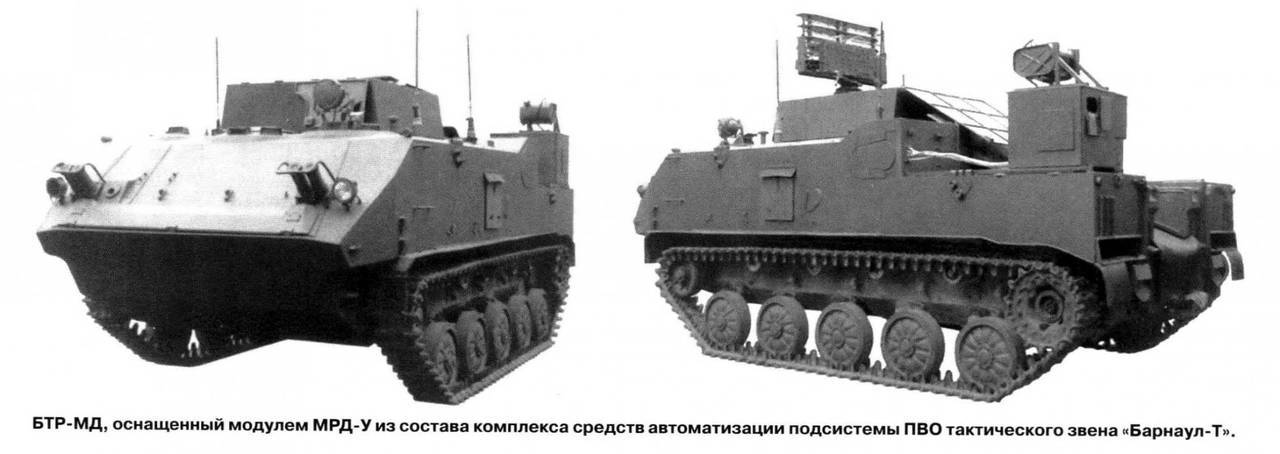
Characteristically, the BTR-MD has the same combat mass as the BMD-3 - 13,2 T. The new base allowed the payload of the airborne descent armored vehicle to be increased almost 1,5 times as compared to the BTR-D and practically equalized with the heavier floating BTR-50P ( all these cars were produced on VgTZ). The buoyancy of the BTR-MD ("Shell") is provided by the displacement of the hull. The flip-down wave reflection shield is mounted on the upper front hull plate. The reserve of buoyancy, stability and height of the freeboard afloat in combination with jet propulsion allows not only overcoming from water obstacles with a noticeable flow, but also landing of an armored personnel carrier from amphibious assault ships of the Navy and overcoming the surf band with a landing force. In case of agitation, a pipe may be attached to the retractable air intake pipe to ensure the air intake during the melt. Although TTZ had also issued 1992 g for the development of landing facilities for the BTR-MD "Shell", their creation was delayed even more than the BTR-MD itself. Only after the issue of the Bakhcha-U-PDS issue (for BMD-2009) in September of the TTZ on the topic “Bakhcha-U-PDS”, the TTZ was reissued as a supplement to create airborne assault vehicles for the airborne assault vehicle. But the further perspective of these landing means remained uncertain.
Tactical and technical characteristics of the BTR-MD ("Object 955")
Crew + assault, cel 2 + 15
Carrying capacity, kg 2000
Air transportation - by IL-76 type (M, MD), An-22, An-124, Mi-26 helicopter
Parachute landing with IL-76 (M, MD), An-22, An-124 airplanes
Landing with the machine, cel 3
Combat weight, t 13,2
Armament:
- machine gun, number x caliber, brand - 1х7,62-mm, PKT
- installations for assault weapons - Course for 5,45-mm machine gun РПКС74, two airborne and aft for 5,45-mm machine gun АКС74
Engine:
- Four-stroke diesel with turbo power, 2В-06-2
- number of cylinders, cooling - 6, liquid
- power 450 hp (at 2000 rpm)
Transmission - Hydromechanical, with differential turning mechanism, with hydrostatic transmission
Water jet, type - Hydrojet
Maximum movement speed;
- on the highway, km / h 71
- afloat, km / h 10,5
Average speed on a dry dirt road, km / h 45-50
Special airborne vehicles
The armored personnel carrier BTR-MD ("Shell") served as the basis for a number of special vehicles. Among them is the module MRD-U mounted on the BTR-MD, which is an integral part of the automation equipment complex (KSA) of the tactical defense subsystem. KSA as a whole provides the possibility of operation of anti-aircraft weapons both as part of the created unified management system of the tactical link “Constellation” and autonomously. The developer of KSA, OAO NPP Rubin (Penza), presented MRD-U in 2008 among other modules of the complex.
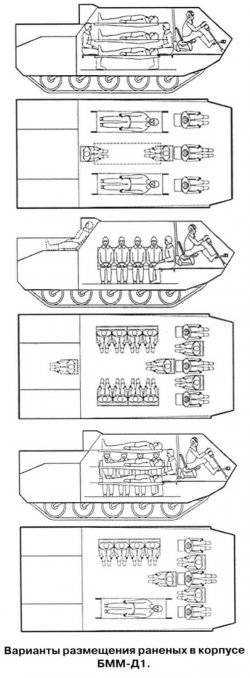 The MRU-D (9C932-2) is a reconnaissance and control module designed to equip the airborne command and control points. The control unit of the vehicle practically repeats the base BTR-MD, but the commander's turret on the left has no machine-gun installation. Installation for a light machine gun on the right side of the frontal sheet saved. The average compartment is turned into an operational compartment in which the places for two operators are located.
The MRU-D (9C932-2) is a reconnaissance and control module designed to equip the airborne command and control points. The control unit of the vehicle practically repeats the base BTR-MD, but the commander's turret on the left has no machine-gun installation. Installation for a light machine gun on the right side of the frontal sheet saved. The average compartment is turned into an operational compartment in which the places for two operators are located.For each operator there is an automated workplace with a control panel, a personal computer, means of communication and data transmission, and with other equipment. The equipment units are mounted in the compartment on racks with unified cells. For landing and disembarking operators use a large stern hatch compartment. At the top of the module, there is an antenna-hardware radar for detecting air targets 1Л122-1 with a pan-tilt device and four radio antenna communications devices.
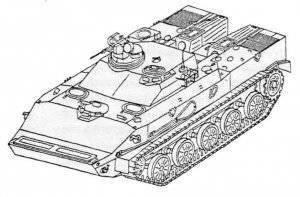 Three-coherently pulsed radar 1L122-1 Omnidirection decimeter (developer - NIIRT) enables detection, determination of position and support of such air targets such as airplanes, helicopters, cruise missiles, unmanned aerial vehicles in a range of distances to 40 km and altitude up to 10 km with a circular review, the definition of their affiliation on the principle of "friend or foe" in the conditions of active and passive interference by the enemy. The phased antenna array is compact enough to be folded inward in the stowed position. There is an automated system of topographic location. To provide equipment with electric power, a diesel generator is installed on the machine.
Three-coherently pulsed radar 1L122-1 Omnidirection decimeter (developer - NIIRT) enables detection, determination of position and support of such air targets such as airplanes, helicopters, cruise missiles, unmanned aerial vehicles in a range of distances to 40 km and altitude up to 10 km with a circular review, the definition of their affiliation on the principle of "friend or foe" in the conditions of active and passive interference by the enemy. The phased antenna array is compact enough to be folded inward in the stowed position. There is an automated system of topographic location. To provide equipment with electric power, a diesel generator is installed on the machine.The MRU-D can be used as part of the Strela-10МЗ short-range air defense missile system. An anti-aircraft missile or gun-missile complex on the BMD-3 (BMD-4) or BTR-MD chassis is not represented.
Also, an armored medical machine BMM-D1 (OCR Trauma) and BMM-D2 was created on the chassis of the BTR-MD, and a VDVBMM-DZ medical dressing machine on an extended seven-kilometer chassis.
The BMD-3 served as the basis for the PXM-5 radiation and chemical reconnaissance vehicle. The main contractors for RHM-5 were OJSC “Plant Tula” and LLC “Volgograd machine-building company“ VgTZ ”. The machine is designed to conduct radiation, chemical and non-specific biological reconnaissance units of the air or marine assault forces in the event of the use of weapons of mass destruction in difficult topographic, meteorological and night conditions, while overcoming natural and artificial obstacles, water obstacles. In accordance with the tasks to be solved, it is equipped with the means of conducting domestic production of RCBs: instruments of the type IMD (dose rate meter), gas detectors, as well as means of inertial navigation, means of collecting, processing and transmitting data, setting the triggering signal of chemical alarms, a radio station.
In the department of management along the axis of the machine there is a driver, in the middle section (in a fixed wheelhouse) a senior chemist is placed on the left, on the right and slightly behind (on the universal seat) the commander of the machine, in front of the commander is the coordinator of the navigation equipment. The multifaceted welded armored car with a flat roof is welded to the hull and rises above the hull roof on 340 — 350 mm. Fence and outlet openings for taking air and aerosol samples from the atmosphere, connected through electric air valves and tubes with radiation, chemical and biological reconnaissance devices (assembled in the rack of the instrumentation section behind the combat crew), are made in the cabin. In the cabin there are also sets of sampling and fencing signs, containers for drinking water, in the right-hand side niche mounted by the HLF. There is a special protection system for a nuclear explosion with automatic sealing of the case and disconnection of the main power supply circuits and the engine for the duration of the shock wave. Taking into account the work in the conditions of radioactive contamination of the area, steel protective anti-radiation screens 10 mm thick are installed on the floor of the department of management and the middle section under the feet of members of the crew. The contaminated area remains sealed habitable compartments; the engine compartment remains open, the engine is running, and the car can throw over the infected area. In the control compartment to the right of the driver, there are cylinders of a tank degassing kit designed for partial degassing of the vehicle chassis. In addition to the standard radio station, as on the base machine, the РХМ-5 is equipped with an additional radio receiver in the wheelhouse. Air heating system facilitates the work of the calculation in the cold season.
For self-defense, a remote-controlled 7,62-mm machine gun with external power was mounted on a rotating commander's turret on the cabin roof. Course installations are removed, but loopholes in the right side of the hull and the hull of the hull are retained. Six smoke grenade launchers are installed along the logging sides.
The PXM-5 is designed for parachute landing with crew members inside the vehicle and, accordingly, is equipped with four universal seats. It is possible to transport the vehicle on the external suspension of the Mi-26 helicopter. The mass of the car with full load is the same 13,2 t as that of the BMD-3, and the driving characteristics are generally similar to the base machine.
The PXM-5 was manufactured in 2009 and was tested on the basis of the 106 Guards Airborne Division. This year, as reported, the first serial copies transferred to the troops.
***
The transfer of the production of airborne assault vehicles to the Kurgan Machine-Building Plant caused, above all, a change in the base landing gear. The BMD-4 and 2C25 "Sprut-SD" were held in ceremonial formation at the May 9 Moscow Parade in Moscow, but in March of the same year, the BMD-2008M landing gear was publicly shown at the Kurganmashzavod test site. a set of weapons that BMD-4, but on a completely different chassis. In April, 4, Deputy Defense Minister of the Russian Federation V.A. Popovkin announced that the Armed Forces refuse to further purchase BMD-2010.
History and the state of BMD-4М, work on which is still ongoing, is a special topic. We only note that with the stopping of special production at VgTZ and the advent of BMD-4М, the fate of not only BMD-4, but also SPTP Sprut-SD, the BTR-MD armored personnel carrier and the vehicles on their chassis remained uncertain. What exactly and how it will be possible to “transfer” to a new chassis if it is accepted for supply, time will tell.

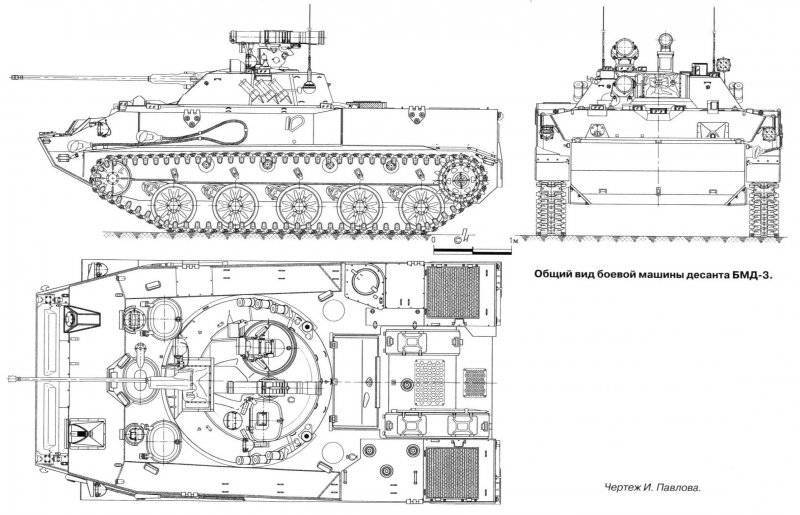

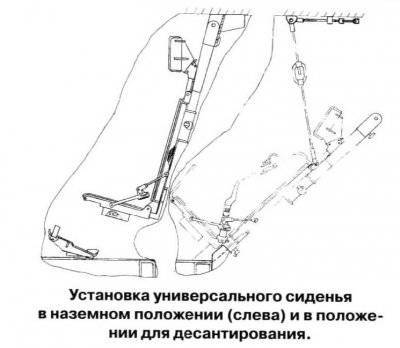
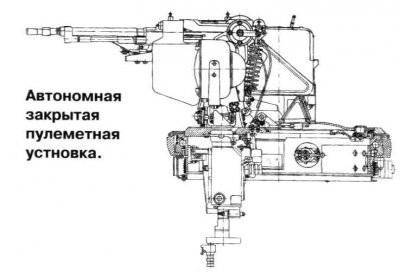
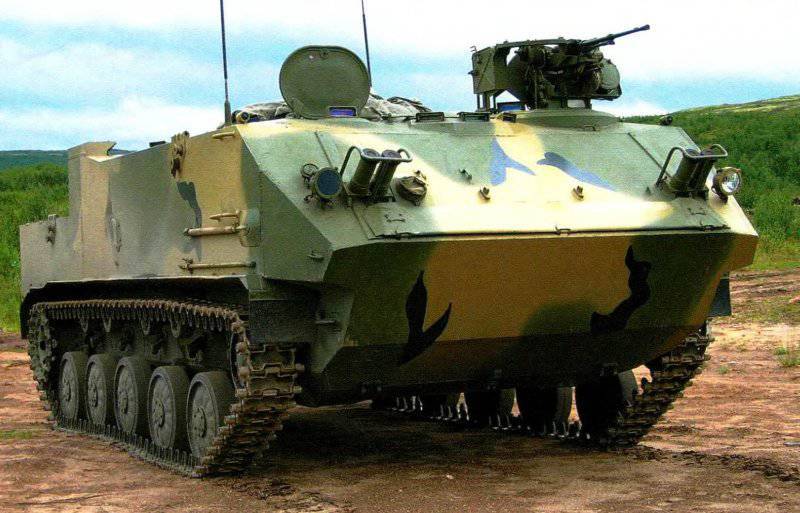
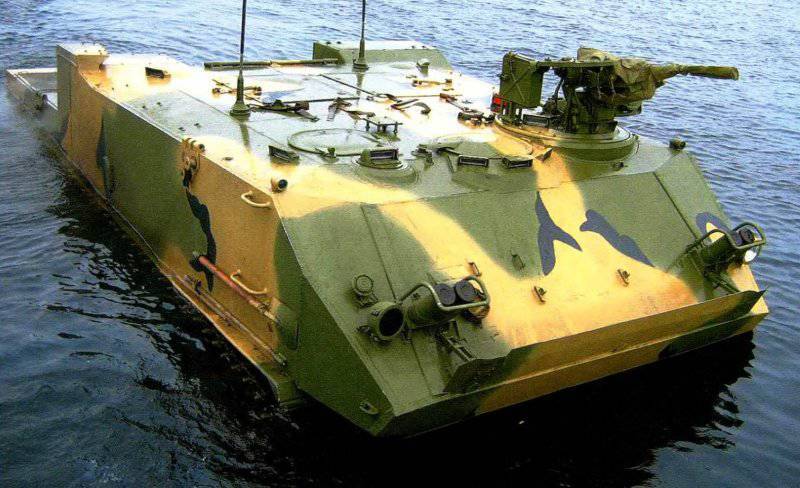
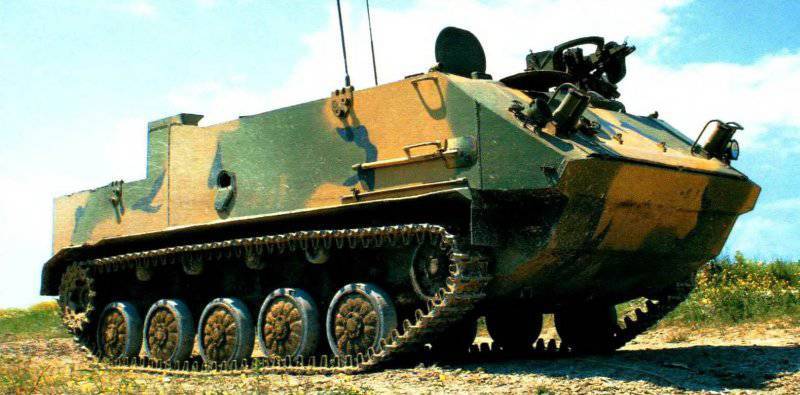

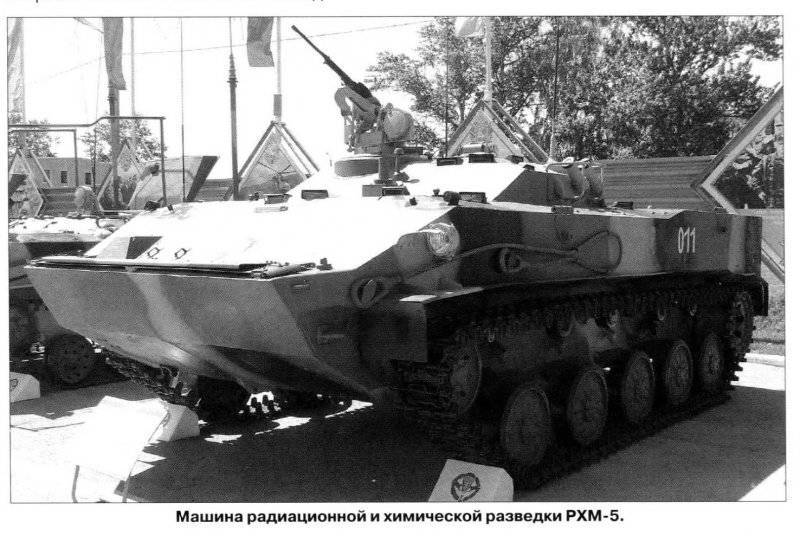
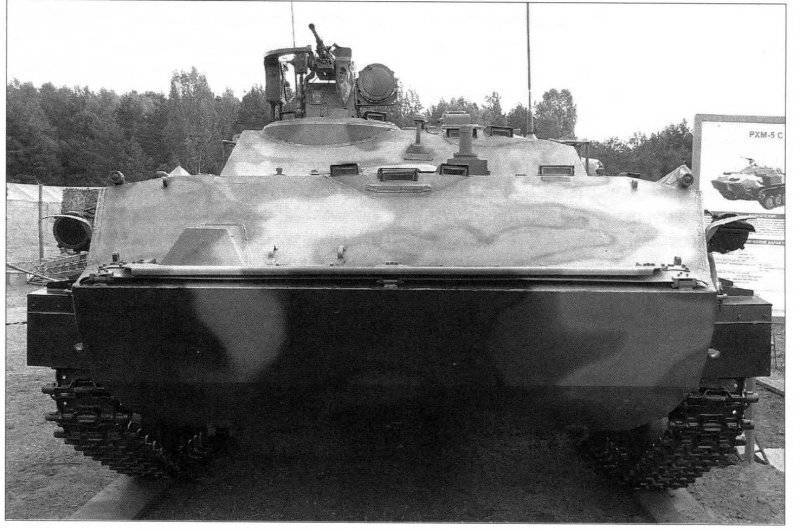

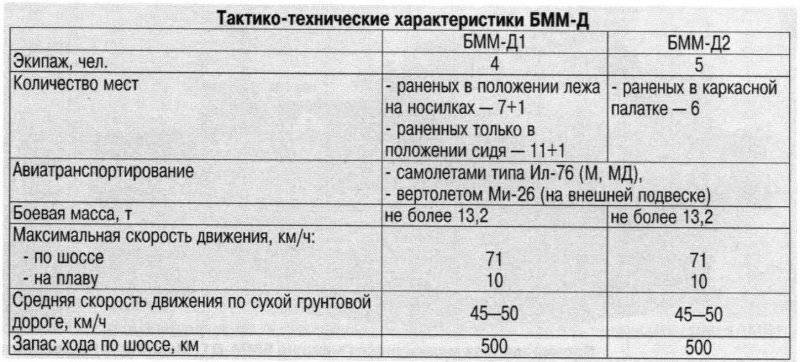
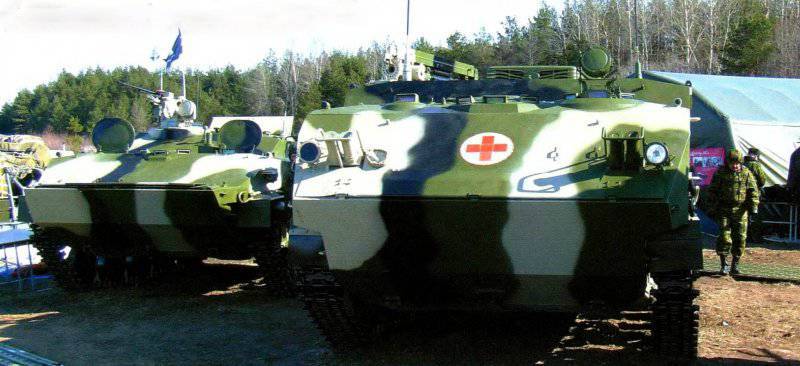
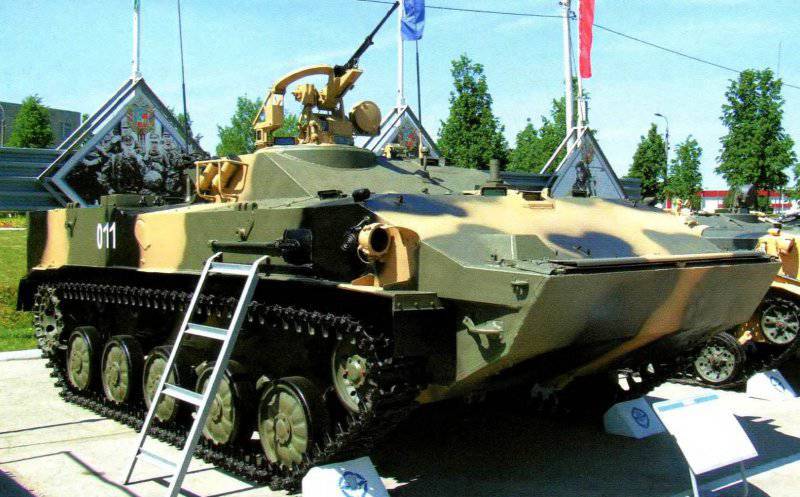
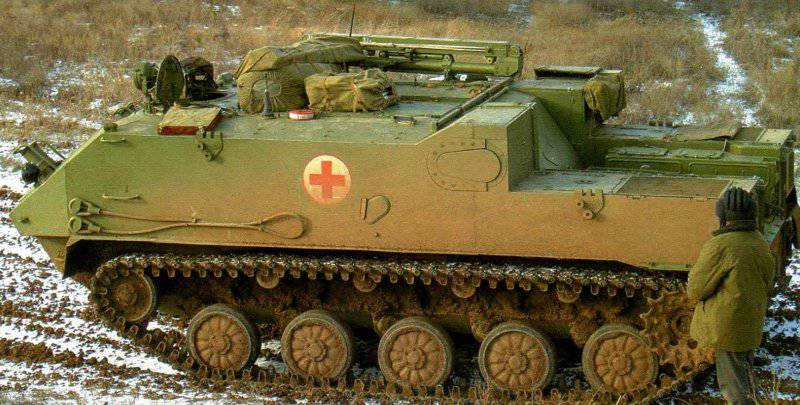
Information